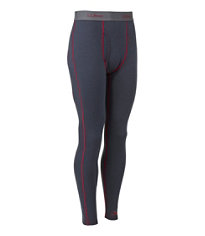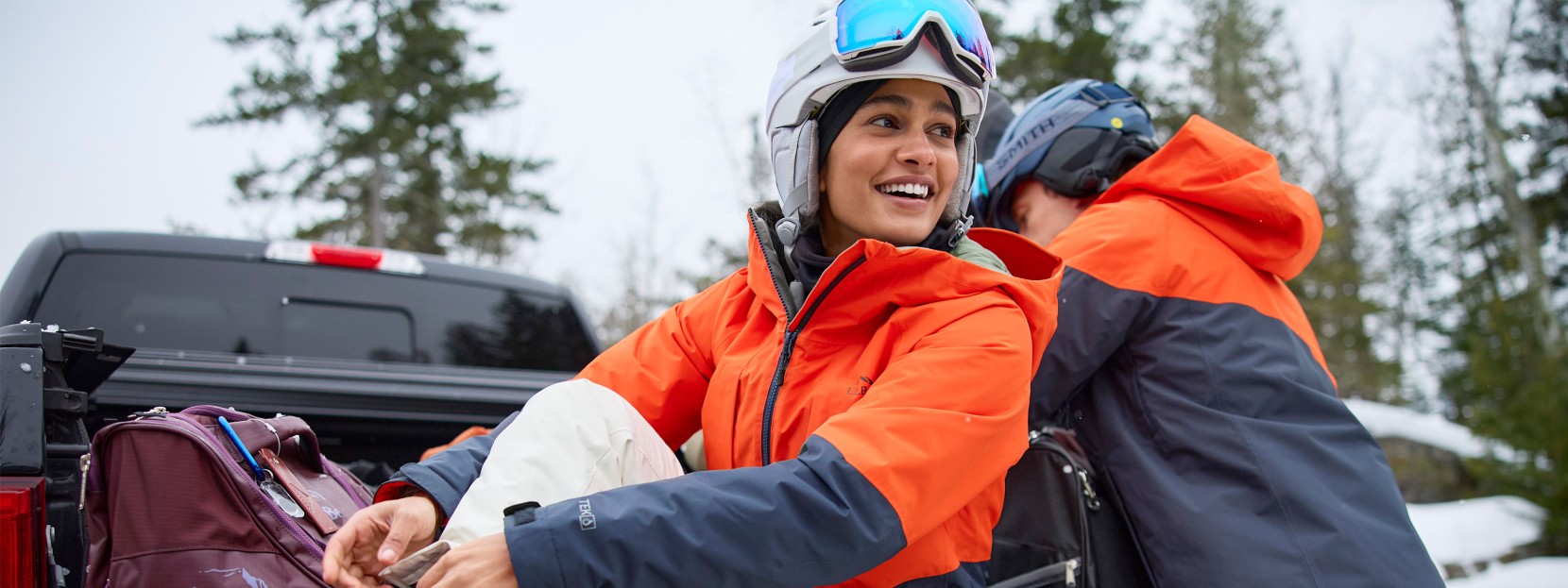
Let's start with a quick look at all the pieces you'll want to have:
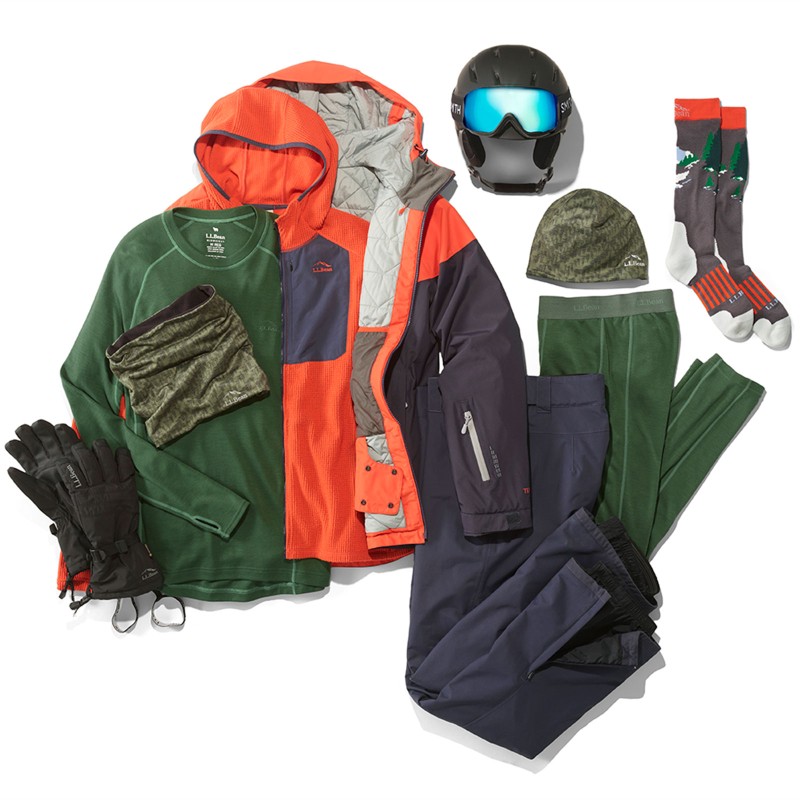
The Right Gear to Keep Your Upper Body Warm
Synthetic or Wool Base Layer Tops:
You’ll want a synthetic or wool base layer next to your skin. Choosing between lightweight, midweight or heavyweight base layers is bit trickier because you have more options for what you’ll wear over them. In general, a lightweight base layer will work well if you wear a fleece jacket or lightweight down jacket between it and your ski jacket. If you like to go lighter and skip the fleece or down jacket, you’ll want to consider a midweight or heavyweight base layer.
Shop Men's Synthetic Base Layers
Shop Women's Synthetic Base Layers
MIDWEIGHT JACKET:
A lightweight down or fleece jacket worn over your base layers and under an outer shell will keep you warm without being overly bulky.
SKI JACKET:
Waterproof, insulated and loaded with convenient pockets and other ski-specific features, ski jackets are a great way to stay warm and dry on the slopes.
WATERPROOF SHELL
While they might not be designed specifically for skiing, waterproof, breathable rain jackets worn over a fleece or lightweight down jacket are a good choice in average winter conditions.
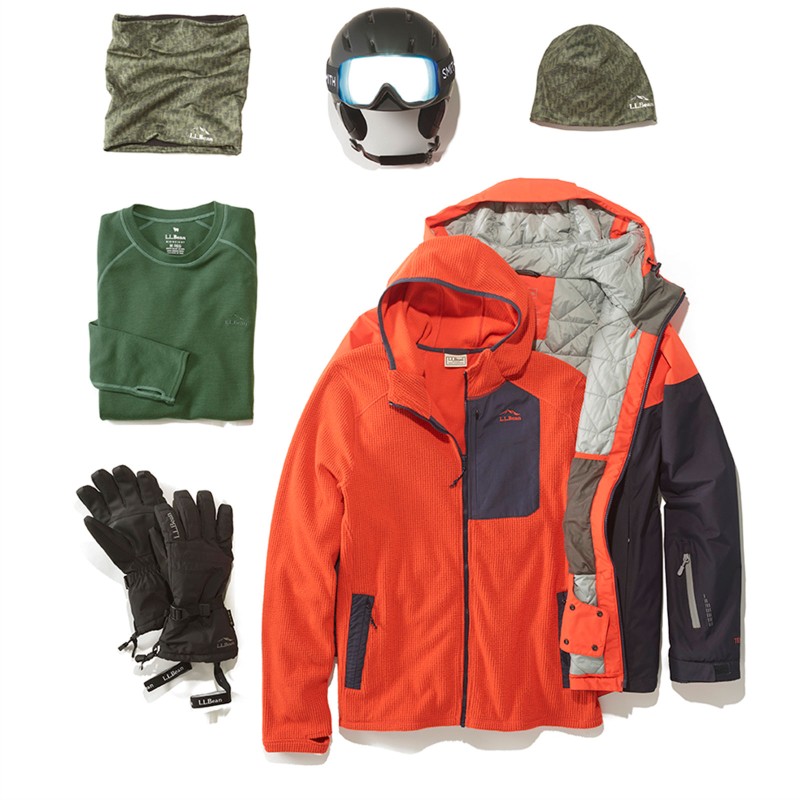
GLOVES/MITTENS:
Waterproof, insulated ski gloves or mittens are a must-have on the slopes. They have ski-specific features like built-in goggle wipes and long cuffs to keep snow out. Mittens are warmer than gloves, especially when paired with lightweight liner gloves.
HELMET:
A ski helmet keeps your head warm and dry while protecting it in the event of a fall. For extra warmth you can wear a thin hat, balaclava or neck gaiter underneath your helmet. You can pull a balaclava and neck gaiter up over your nose in serious cold.
SKI GOGGLES:
Goggles protect your eyes from icy winds, sleet and snow. They also cut the glare and allow you to see undulations and other features on the hill more clearly.

QUICK TIP:
NEVER, EVER wear cotton! It holds moisture like sweat and takes a long time to dry, so it can make you feel a lot colder than the temperature outside – a recipe for hypothermia. We’ve all seen the skier wearing cotton jeans on the slopes, don’t be that skier!
Warm Apparel for Your Lower Body
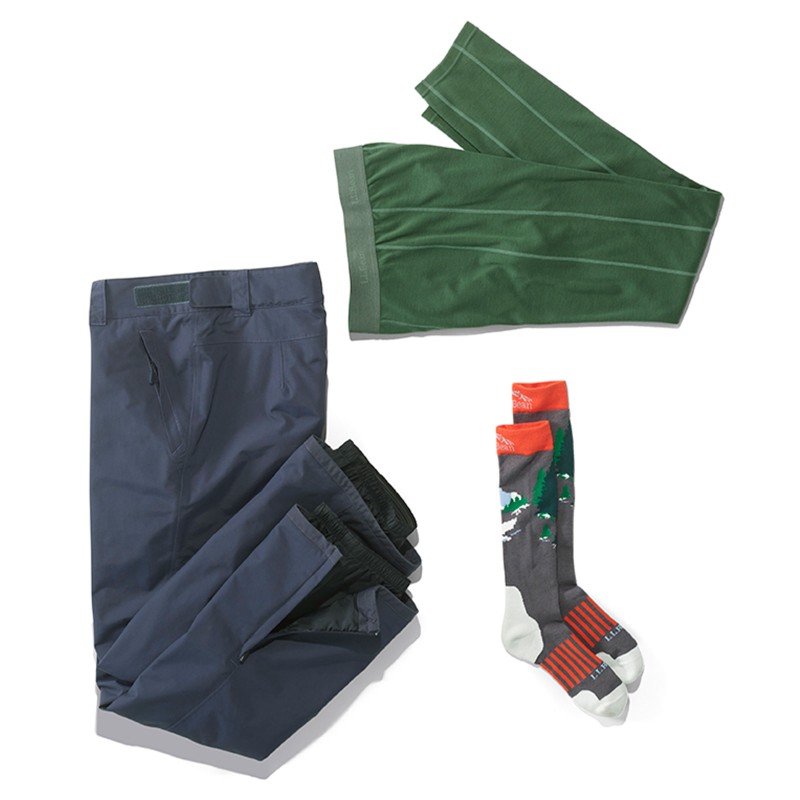
SYNTHETIC OR WOOL BASE LAYER PANTS:
Layer underneath your ski pants or bibs with a synthetic or wool base layer. Lightweight or midweight base layers will work well in average winter conditions. If things are super cold, then a heavyweight layer is what you’ll want.
Shop Men's Synthetic Base Layers
Shop Women's Synthetic Base Layers
SKI PANTS:
Waterproof, breathable ski pants or bibs are designed to keep you warm and dry while providing the freedom of movement you need for skiing. Bibs are warmer because they cover part of your torso.
SKI SOCKS:
Warm wool or synthetic ski socks are like hiking socks with a couple important differences. First, they’re taller to reach over the top of your ski boots. Second, they have a bit of padding in the shin to cushion this sensitive area against the hard edge of your boots.

QUICK TIP:
Change into your ski socks when you get to the mountain. Wearing them in your heated car could introduce moisture which might make your feet cold later. This way, you start your day on the slopes with dry, warm socks.
A few more handy tips:
- Dress warmer than the temperature. Remember, you’ll be riding a lift up the hill and you’ll be exposed to the elements. And we’ve all been there when the lift stops for several minutes. Be ready to withstand the wind and cold.
- Don’t forget hand and toe warmers. These handy tools can be placed in your boots and gloves to keep them nice and toasty.
- Remember the sun! Just because it’s winter doesn’t mean you can’t get sunburned. Be sure to put sunscreen on your face, ears and neck.
Now that you know what to wear, you can head to the mountain with confidence and feel great out there.
Get ready for a winter of family fun with gear designed to make it even easier for you to get outside:




